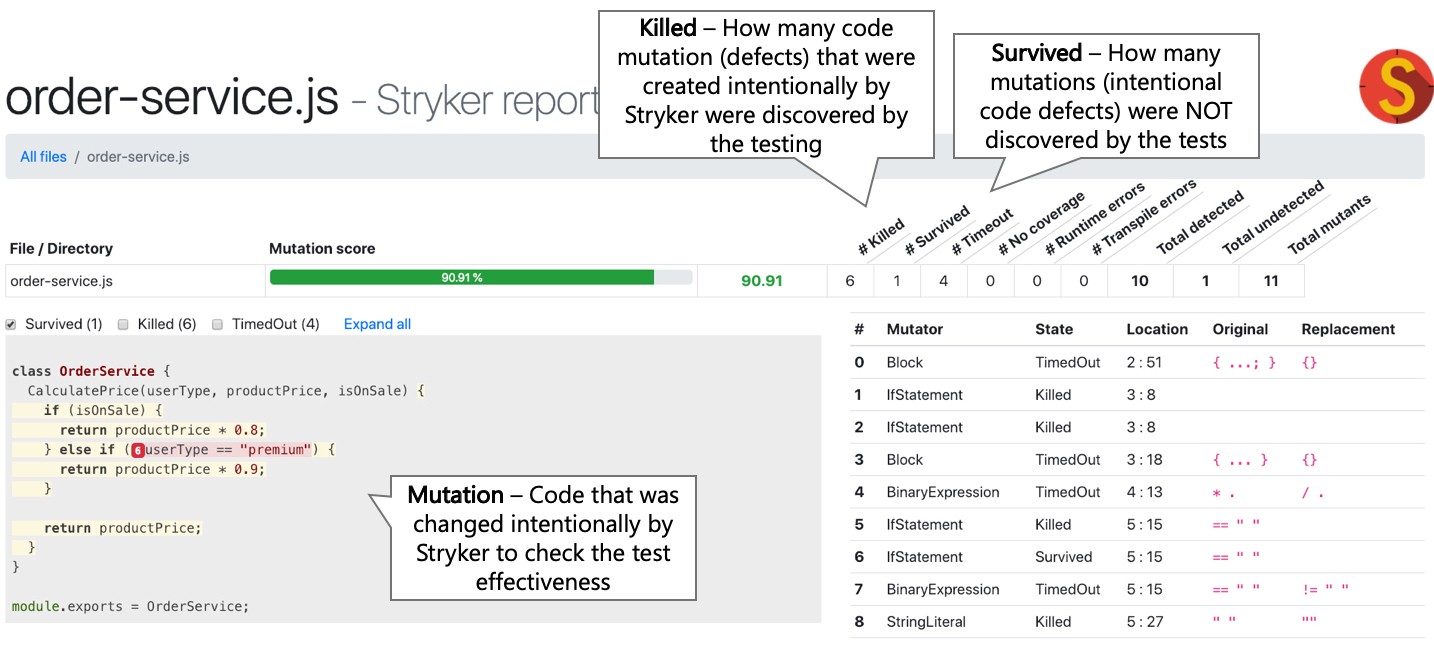⚪ ️ 4.3 Measure logical coverage using mutation testing
:white_check_mark: Do: The Traditional Coverage metric often lies: It may show you 100% code coverage, but none of your functions, even not one, return the right response. How come? it simply measures over which lines of code the test visited, but it doesn’t check if the tests actually tested anything — asserted for the right response. Like someone who’s traveling for business and showing his passport stamps — this doesn’t prove any work done, only that he visited few airports and hotels.
Mutation-based testing is here to help by measuring the amount of code that was actually TESTED not just VISITED. Stryker is a JavaScript library for mutation testing and the implementation is really neat:
(1) it intentionally changes the code and “plants bugs”. For example the code newOrder.price===0 becomes newOrder.price!=0. This “bugs” are called mutations
(2) it runs the tests, if all succeed then we have a problem — the tests didn’t serve their purpose of discovering bugs, the mutations are so-called survived. If the tests failed, then great, the mutations were killed.
Knowing that all or most of the mutations were killed gives much higher confidence than traditional coverage and the setup time is similar
❌ Otherwise: You’ll be fooled to believe that 85% coverage means your test will detect bugs in 85% of your code
✏ Code Examples
:thumbsdown: Anti-Pattern Example: 100% coverage, 0% testing
function addNewOrder(newOrder) {
logger.log(`Adding new order ${newOrder}`);
DB.save(newOrder);
Mailer.sendMail(newOrder.assignee, `A new order was places ${newOrder}`);
return { approved: true };
}
it("Test addNewOrder, don't use such test names", () => {
addNewOrder({ assignee: "John@mailer.com", price: 120 });
}); //Triggers 100% code coverage, but it doesn't check anything:clap: Doing It Right Example: Stryker reports, a tool for mutation testing, detects and counts the amount of code that is not tested (Mutations)

